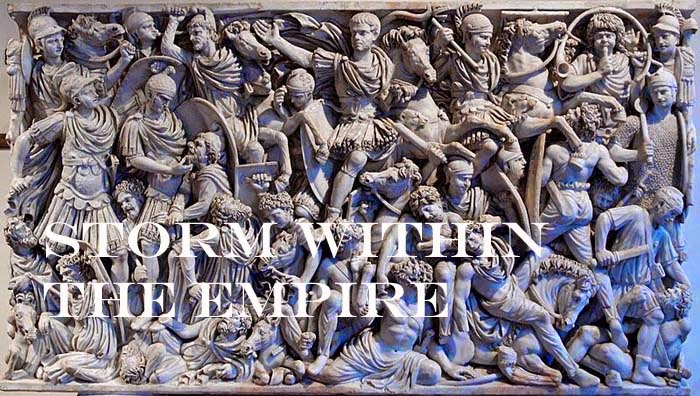Since the publication of DBA
3.0, I have devoted much time and attention to the construction of new terrain
pieces. During the early stages of 3.0 testing, the terrain we used came from
the gunpowder collection which was, on the whole, quite large in quantity and size. Through our game
experience we quickly saw a need to create new items and preferably these should be of medium
or small size. Further, we swapped the standard board for one of a larger
format, 80cm x 80cm. This seemed paradoxical, but enlarging the game board did diminish
the chance of discarding terrain pieces resulting in some quadrants containing three
pieces. This generate some interesting battles and certainly changed our
perspective with regard to certain terrain features, such as BUA
and rivers.
As the collecting of ancient and
medieval armies proceeded this was done on a project basis focusing on a central theme army and a
host of enemies. The first of these, the Severan Dynasty (3rd century
AD), focused on Rome and the enemies it faced across its frontiers. Hilly terrain was
quickly needed to engage the Picts, forest regions were needed to fight most of the barbarians, the nomadic horsemen had steppe as home terrain, and the Parthians needed dry landscape to call home.
Generally, the construction
of terrain features began after the completion of a new army. As time progressed and the number of armies grew,
the terrain pieces varied in quality and colour. This was due to either new materials used
or new ideas were implemented for their construction.
The Historical Match Ups series posted here gave me an opportunity to use the armies, experiment with terrain
placement, the deployment of the armies, and simulate their tactics, but a closer
inspection of the photos did reveal much that needed to be done with the terrain. It was then I decided to take a rigorous step and standardise
the terrain pieces for all seven DBA categories.
The project took a few
months to complete, but I am satisfied with the end result. The templates used for
the majority of bad and rough going were produced in standard size and shape which
greatly reduced the storage space by 60%. Bad and rough going terrain pieces now consisted of one large feature (6BW x 3BW), three mid-size (4BW x 3BW) and one or
two small pieces (3BW x 2BW); the latter are useful as terrain can be intersected by a road or river.
Duplicate templates were
made so they could be used in European landscape or dry arid regions; an arable
region located in Mesopotamia should look somewhat different than one located in France.
Templates could also serve multiple functions depending on the scatter material
placed on top; this could represent rocky, scrub, marsh, enclosures or even BUA
(hamlet) and all this is covered on the final page.
Where applicable, I have
noted the dimensions and quantity of certain pieces under the photos.
Below is an overview of the
armies having a particular terrain by type listed in each book. Do not overlook
the fact that the first book blankets a longer period of time with each
successive book a five century period. Some sub-lists may have two terrain types
as this reflects a period of migration or conquest.
Book I (64 lists, 137 sub-lists)
Arable
64
Forest
0
Hilly
28
Steppe
7
Dry
7
Tropical
2
Littoral
29
Book II (84 lists, 291 sub-lists)
Arable
89
Forest
14
Hilly
33
Steppe
16
Dry 14
Tropical
10
Littoral
25
Book III (80 lists, 127 sub-lists)
Arable
39
Forest
8
Hilly
21
Steppe
17
Dry
18
Tropical
12
Littoral
12
Book IV (85 lists, 149 sub-lists)
Arable
63
Forest
10
Hilly 26
Steppe
10
Dry
6
Tropical
4
Littoral
21
313 lists, 794 sub-lists

No comments:
Post a Comment